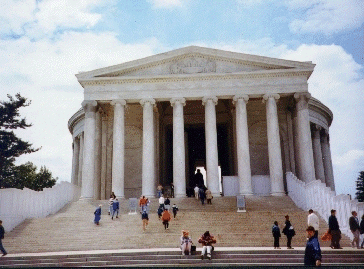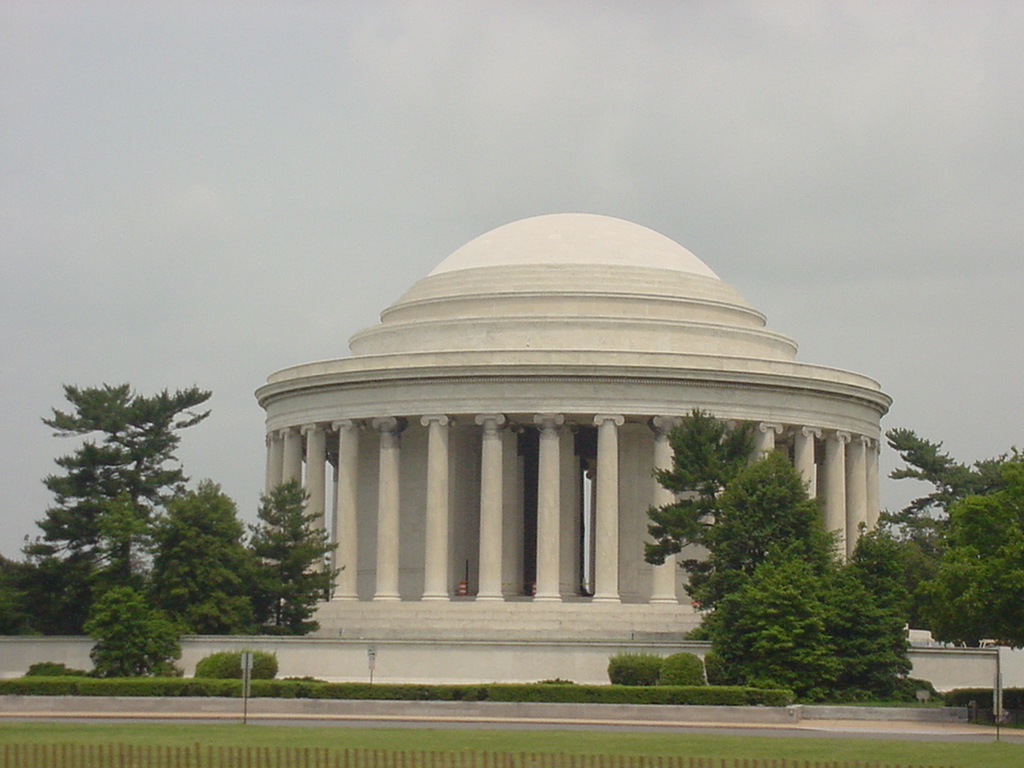
 |
|
Thomas Jefferson: The ManThomas Jefferson -- political philosopher, architect, musician, book collector, scientist, horticulturist, diplomat, inventor and third President of the United States -- looms large in any discussion of what Americans are as a people. Jefferson left to the future not only ideas but a great body of practical achievements. President John F. Kennedy recognized Jefferson's accomplishments when he told a gathering of American Nobel Prize winners that they were the greatest assemblage of talent in the White House since Thomas Jefferson dined there alone. With his strong beliefs in the rights of man and a government derived from the people, in freedom of religion and the separation of church and state, and in education available to all, Thomas Jefferson struck a chord for human liberty 200 years ago that resounds through the decades. But in the end, Jefferson's own appraisal of his life, and the one that he wrote for use on his own tombstone, suffices: "Author of the Declaration of American Independence, of the Statute of Virginia for religious freedom, and the Father of the University of Virginia." |
|

|
Jefferson's importance as one of the great figures in the Nation's history demanded a memorial site of prominence in the Capital City equal to that occupied by the Washington Monument and the Lincoln memorial. Placing the Jefferson Memorial on the Tidal basin, directly south of the White House achieved this, for these monuments, the White House, and the Capitol completed the east-west axis and its complimentary north-south alignment, creating a monumental heart for the city. In preparation for the plans of the memorial, the architect, John Russell Pope, was clearly influenced by Jefferson's taste as expressed in his writings and demonstrated by his works. The circular colonnaded structure is an adaptation of the classical style that Jefferson introduced into this country. Rudulph Evans was sculptor of the bronze statue of Jefferson in the center of the memorial. The memorial was dedicated in 1943 on the 200th anniversary of Jefferson's birth, four years after president Franklin Roosevelt laid the cornerstone. The memorial appears at its most beautiful in early spring when the Japanese cherry trees are in bloom. The trees were presented as a gift from the city of Tokyo to the city of Washington in 1912. |
The Thomas Jefferson Memorial is a unit of the National Park Service, which consists of more than 350 parks representing important examples of our country's natural and cultural inheritance. Address your inquiries and requests for information to: Superintendent, National Capital Parks-Central, 900 Ohio Drive SW, Washington, DC 20024-2000.
Text reprinted from National Park Service Brochure, Government Printing Office, 1995.
Learn more about the Jefferson Memorial from the National Park
Service web site at
http://www.nps.gov/thje/index.htm
To learn more about Thomas Jefferson, please visit the
PBS web site based on the Ken Burns documentary about Thomas Jefferson.
 |
 |
 |
| The Jefferson Memorial | The Jefferson Memorial among Cherry Blossoms | The Jefferson Memorial on the Tidal Basin |
| Click on the image to enlarge in a new window. Images are over 3000 pixels wide.. | ||